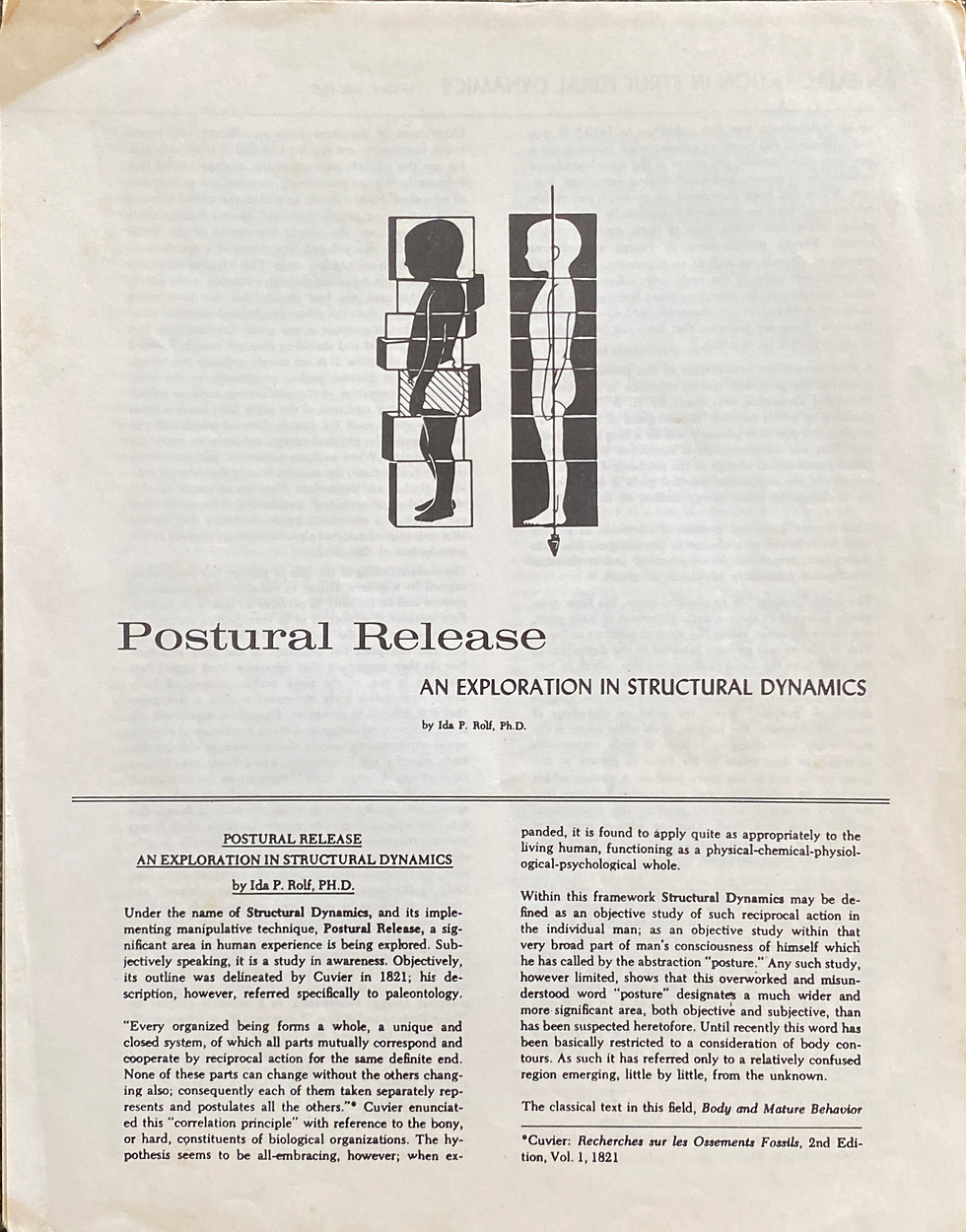A Structural Integration Time Capsule
- Team Morales Method
- Oct 27, 2021
- 3 min read
Updated: May 11, 2023
A client of mine recently brought by an article from sometime in the 60s all about Rolfing. It was so interesting to peek into this little Structural Integration time capsule that fell into my lap and I wanted to take a second to reflect on some of the things that stood out in the article written by Ida. In this article, she takes a deep dive into the concept of posture. It was neat to see the similarities and differences between her words and the principles and theories we utilize in the Morales Method® Academy of Structural Integration (MMASI™) today.
Ida states that posture is a dynamic concept that is “the momentary, ever-changing balance of body components in space, as they relate to the force of gravity at any given instant and in any given position.” I love this definition, but as she proceeds to argue for “establishing standards for postural normal bodies” she begins to lose me. In my mind, these statements are at odds and this is where our philosophy at MMASI™ begins to veer away from Ida’s views.
At MMASI™, we’re not as interested in mapping out what is “normal”. Instead, our goal is about what is functional for the client. What’s functional for one body, may not be functional for another and definitely could not look “normal” at all. This ability to find what is functional for the client is an art that requires us to sometimes let go of the “ideal” and allow space for the unique manifestation that is needed by the individual we’re working on at that moment.
In this article, Ida suggests to reach the goal of a “balance in tensions” that allows the body to “adjust itself to the gravitational pull with least effort” is reached when the “normal posture” has been restored. While our goal of facilitating ease in gravity is similar at MMASI™, the belief that the “normal posture” is how that goal is obtained differs. Sometimes, I have clients coming in looking 'ideal’, but in visible tension and reporting discomfort. They report adopting these postures because some practitioner has told them, 'this is the normal position’, but they may not have the adaptive capacity to adopt that posture with ease.
In my practice, when my clients get off the table and report they're feeling better, they do not always look like they are moving normally, however, they do look like they're moving with ease and most importantly they report feeling better! I have to set aside my ego and my wish to put things in my preconceived notion of what order is to do this work well.
I do want to note that when I work, I do use the anatomical planes as a target toward which I’m loosely aiming (for those of you who are familiar with MMASI™, this is where the Order of Complexity comes in). But, when I find myself getting too attached to this target and spending a lot of time in a session manipulating an arm to move perfectly along the sagittal plane in walking, for example, the good of my client has gone out the window and my ego has taken the reins.
I’m so grateful to my client for sharing these articles with me, so I could have this opportunity to learn more about the concepts and theories Dr. Ida Rolf was wrestling with during the creation of Structural Integration. If you would like to read Ida’s article yourself, I have attached scanned images below for you to peruse. Also, if you’re interested in learning more about the Morales Method® Academy of Structural Integration, check out our website here!

























Comments